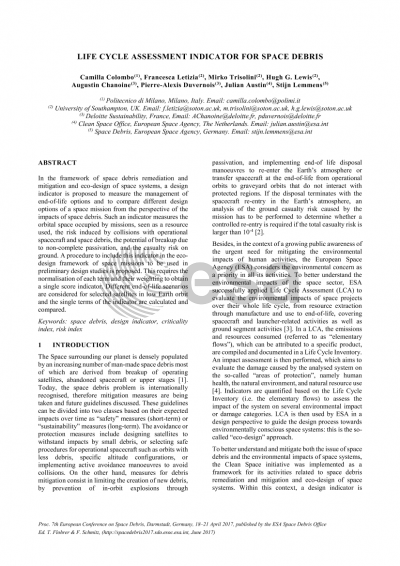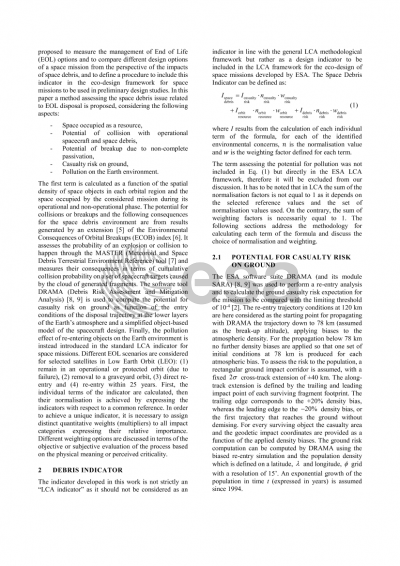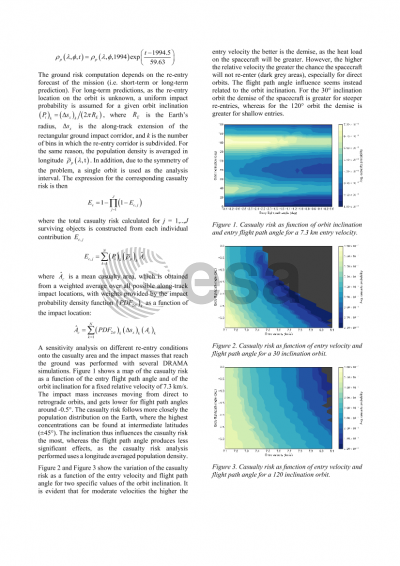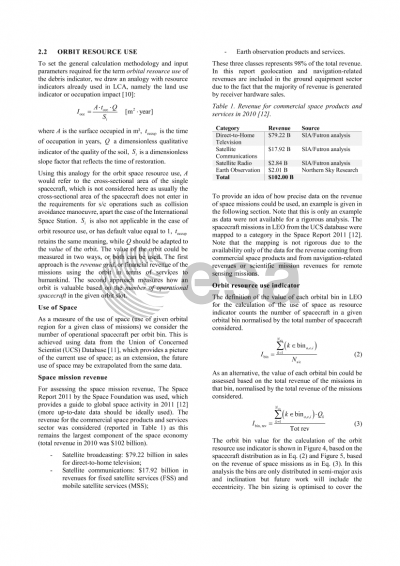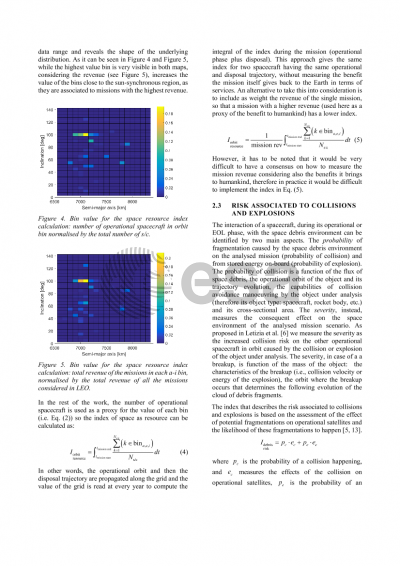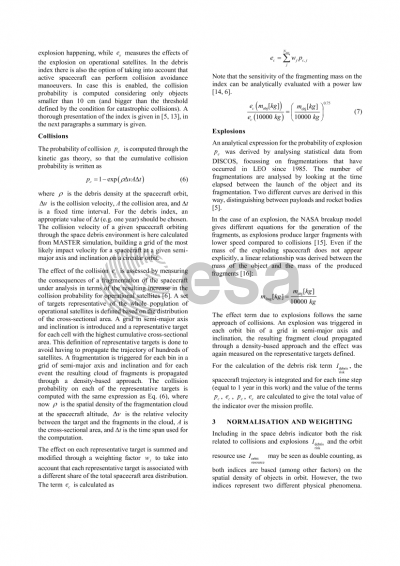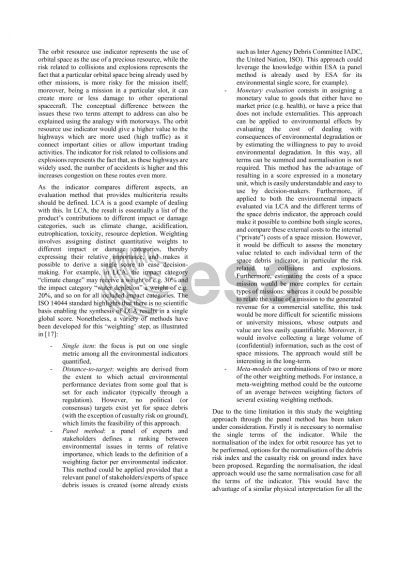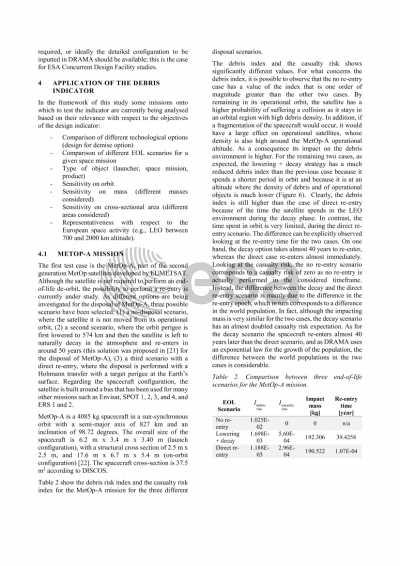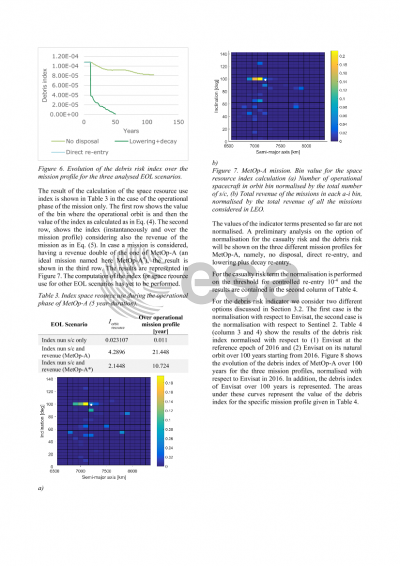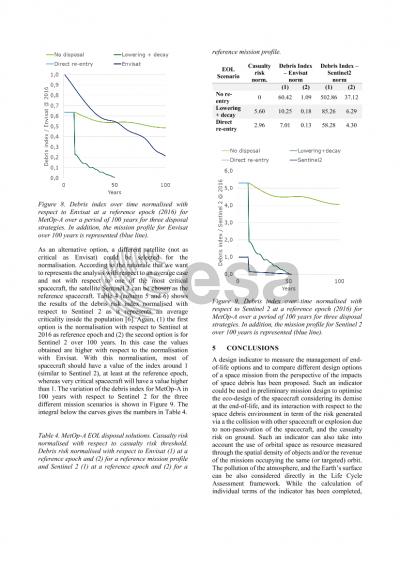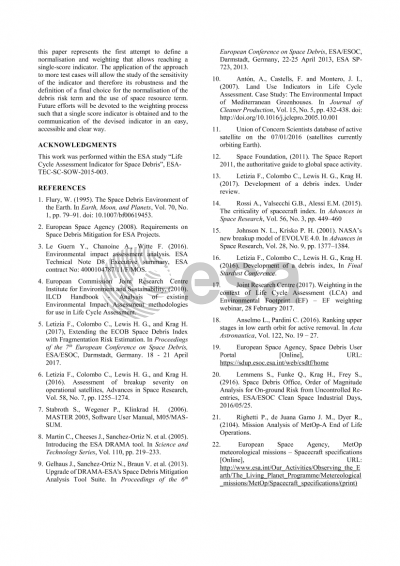Document details

Abstract
To better understand and mitigate both the issue of space debris and the environmental impacts of space systems, ESA implemented the Clean Space initiative as a framework for its activities related to space debris remediation and mitigation and eco-design of space systems. In the framework of space debris mitigation, measures are studied to reduce the generation of space debris by prevention of in-orbit explosions or collisions and the transfer of space debris from operational orbits to graveyard orbits.
Within this context, a Life Cycle Indicator is proposed to measure the management of End of Life (EOL) options and to compare different design options of a space mission from the perspective of the impacts of space debris, and to define a procedure to include this indicator in the Life Cycle Assessment (LCA) of space missions.
An LCA method assessing the space debris issue related to EOL disposal is investigated, considering the following aspects:
- Space as a resource: the value of each orbit is measured considering the available volume and the operational/non-operational time of the mission,
- Potential of collision with operational spacecraft and space debris,
- Potential of breakup due to non-complete passivation,
- Potential for casualty risk on ground,
- Pollution on the Earth environment.
The first term is calculated as function of the spatial density of space objects at each orbital region and the phase space occupied by the considered mission. The potential for collisions or breakups and the following consequences onto the space debris environment are measured though an extension of the Environmental Consequences of Orbital Breakups (ECOB) index. It assesses the probability of an explosion or collision to happen through the MASTER tool and measures their consequences in terms of cumulative collision probability on a set of spacecraft target caused by the cloud of generated fragments through the event. The software tool DRAMA is used to compute the potential for casualty risk on ground as function of the entry conditions of the disposal trajectory at the lower layers of the Earth’s atmosphere and a simplified object-based model of the spacecraft design.
The pollution on the Earth environment is instead introduced in the standard LCA indicator for space missions.
In this work four particular different EOL scenarios will be considered for some selected satellites in Low Earth Orbit: remain in an operational/protected orbit (due to failure), removal to a graveyard orbit, direct re-entry and re-entry within 25 years.
First, the individual terms of the LCA indicator are calculated, then their normalisation is done by expressing all indicators with respect to a common reference (e.g. Envisat). In order to achieve a unique indicator, it is necessary to assign distinct quantitative weights (multipliers) to all impact categories expressing their relative importance. Different weighting options are discussed in terms of the objective or subjective evaluation of the process based on its physical meaning or perceived criticality.
Preview
